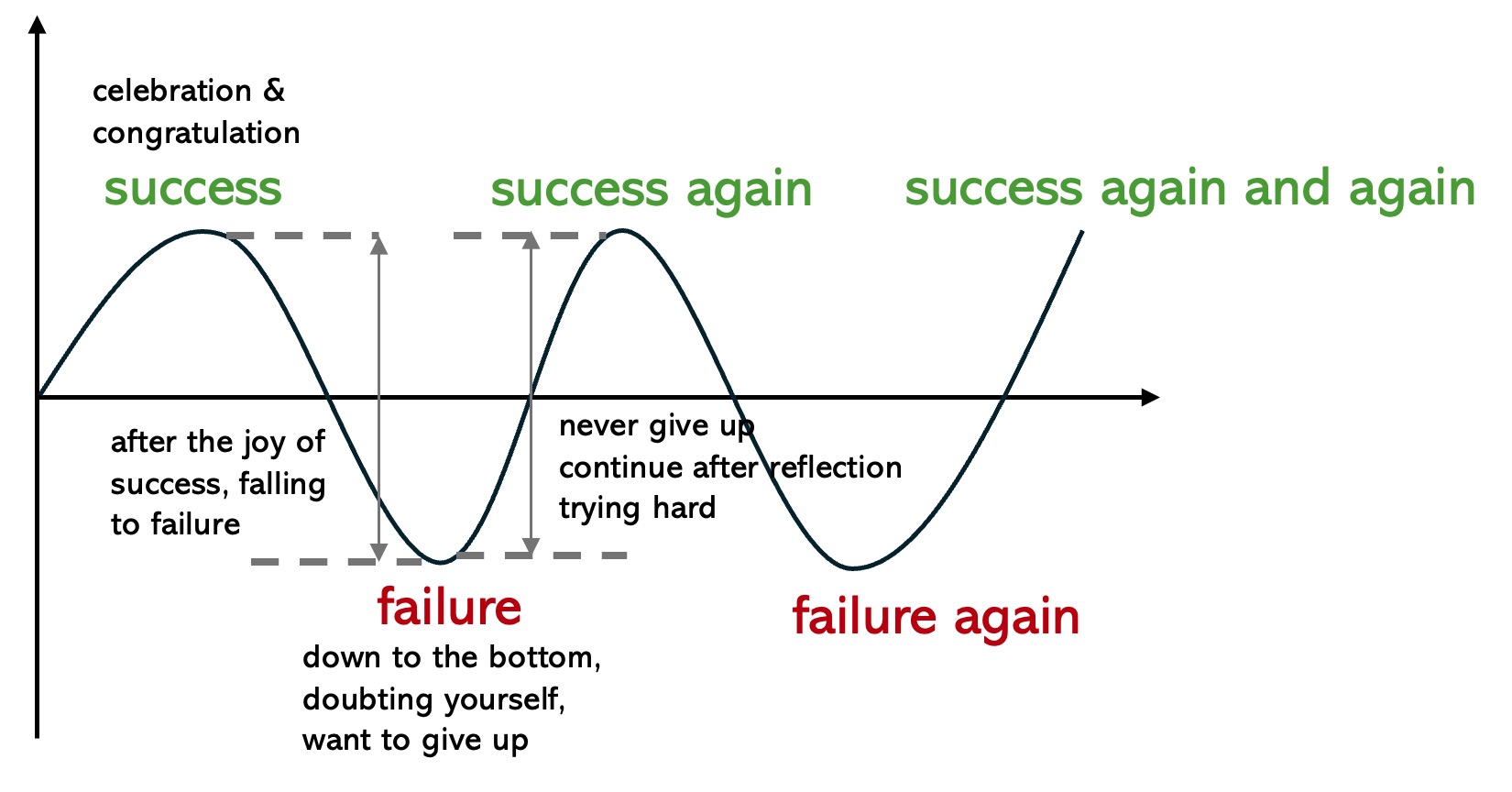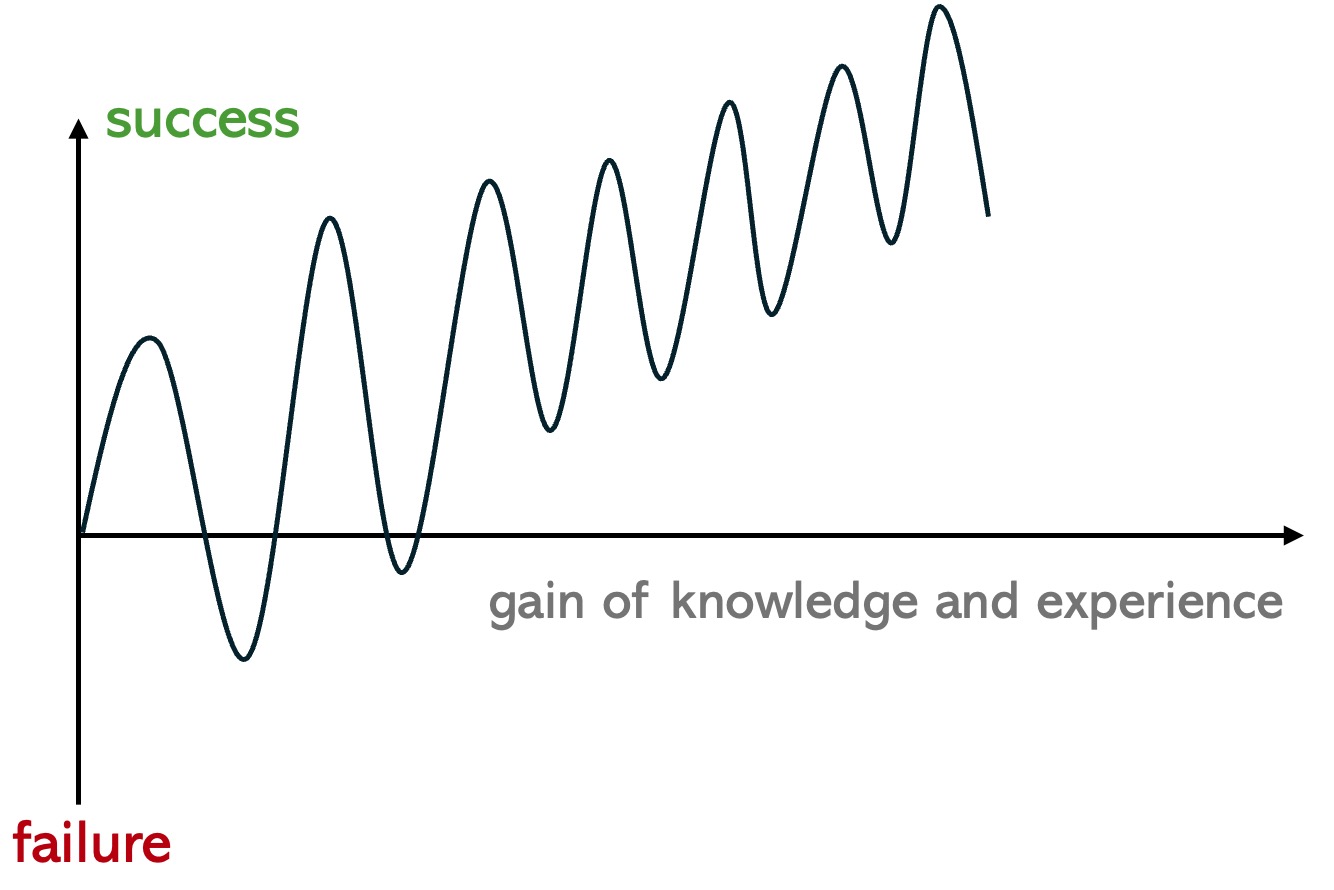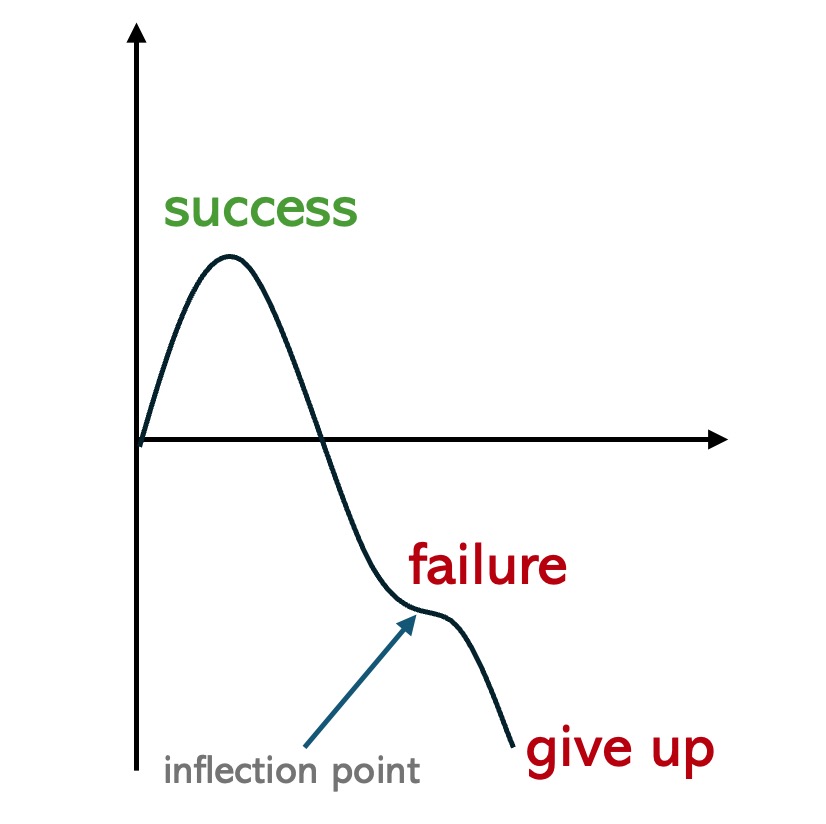Blog3: The Relationship Between Success and Failure
中文版本What is the relationship between success and failure? Some people define them through causality, saying that failure is the mother of success, which implies that failure is a necessary condition for success. While I do not deny this viewpoint, I believe it only describes the first half of the relationship between success and failure. Through my continuous personal reflection, I have developed a new model: success and failure form an ever-ascending sine wave..
In mathematics, a sine wave is a periodic oscillating curve. Let's take a standard period of the sine curve as an example.
\( y = \sin(x) \)
Here, \( y \) represents the degree of success and failure, and \( x \) represents time. Within a complete period of \( 2\pi \), the curve starts at 0, rises continuously to 1 at \( \frac{\pi}{2} \), then falls to -1 in the next \( \pi \) period, and finally climbs back to 0 at \( \frac{3\pi}{2} \).

According to this model as shwon in Fig. 1, success and failure appear in a sine wave pattern. Initially, we work very hard, climbing continuously until we reach success (Y=1). But then, inevitably, we face failure, moving towards Y=-1. After failure, we start climbing again until we reach the next peak of success. This cycle repeats endlessly.
This is a basic curve I derived from observing my own experiences. Success and failure always alternate. Let me some personal examples. Once, I submitted a paper to CVPR and started dating someone. I thought I was successful, but soon after, the paper was rejected, and the relationship ended, making life feel like it had plummeted from a peak to a valley. However, I kept working hard, the paper was successfully resubmitted and accepted to ICCV, and I was accepted into a PhD program. Another example is when I was thinking about a research direction, trying hard but couldn't come up with a good idea. After a period of stagnation, I was suddenly inspired by a discussion or a paper, leading to a new research topic..
Kaiming once said that 95% of the time in research is depressing, and only 5% of the time is happy. This cycle repeats endlessly. I believe success and failure follow a similar pattern, like a sine wave. But as I mentioned earlier, this is an ever-ascending sine wave. What does this upward trend mean?
As we continuously accumulate experiences of success and failure, our abilities and knowledge improve. As shown in Fig. 2, this shifts the entire curve upwards along the Y-axis. In other words, the gains from our successes will outweigh the setbacks from our failures. Even when we fail, it won't be as devastating as before; it becomes more of a setback rather than a total failure. As long as we can quickly adjust, we can continue moving towards success. Of course, this requires a lot of life experience.

However, there are exceptions. When someone cannot withstand the blow of failure and chooses to give up, the derivative of this curve will not go from 0 to a positive number, but rather to a negative one. This is known as an inflection point in mathematics. If you give up after failing, you won't move towards success, but will instead deteriorate further. Only by working hard and moving forward can you reach higher points of success.

